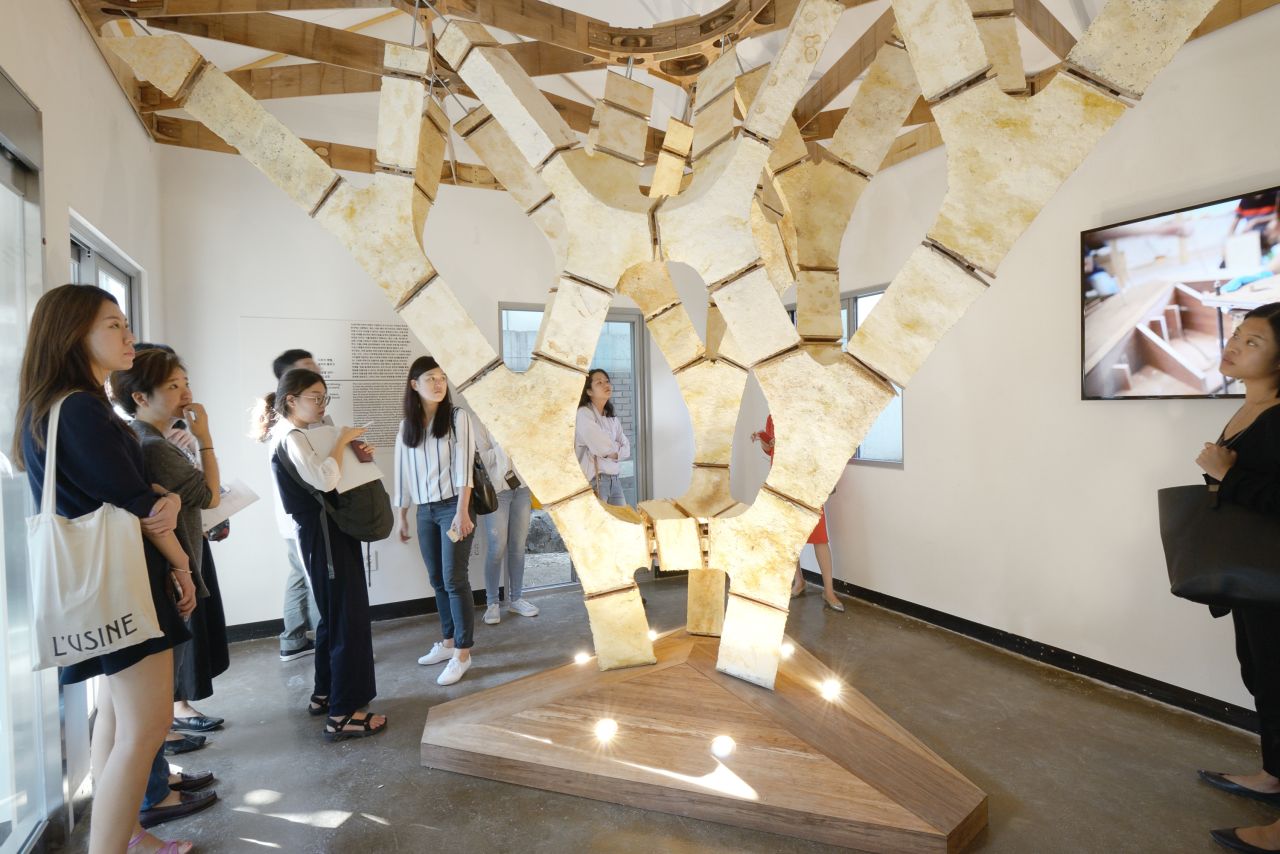Building blocks grown from the roots of fungi can be arranged in load-bearing structures: Scientists of Karlsruhe Institute of Technology (KIT) and ETH Zurich study the use of fungal mycelium in architecture. Cultivated building materials, such as mycelium or bamboo, might replace conventional materials, such as steel and concrete, in the future. Currently, the researchers present their vision under the title of “Beyond Mining – Urban Growth” at the Seoul Biennale of Architecture and Urbanism 2017.
The global construction sector concentrates on the use of a few materials, but resources are finite. Sand, an important aggregate for concrete, threatens to run out soon in some regions. Use of reinforced concrete makes many countries dependent on imports. Scientists of the Sustainable Construction Group of KIT’s Department of Architecture look for alternatives to conventional materials. “It is our vision to make houses grow in the future and to recycle the construction materials after the end of the house’s lifecycle,” group head Professor Dirk E. Hebel explains. Together with the Block Research Group (BRG) of ETH Zurich, the interdisciplinary team of KIT architects, civil and biological engineers, materials and energy researchers under the direction of Karsten Schlesier and Felix Heisel studies the use of regenerative materials in architecture. Until November 5, the researchers present their “MycoTree” and the “Beyond Mining – Urban Growth” Exhibition at the Seoul Biennale of Architecture and Urbanism 2017. The MycoTree is a structure of fungal mycelium and bamboo, the geometry of which was optimized and made load-bearing with methods of 3D graphic statics, a worldwide novelty in this form. Click https://vimeo.com/232044405 for watching the making-of video.
Mycelia are the roots of fungi, a rapidly growing fine mesh of thread-like hyphae. Fungi live on cellulose, the main constituent of vegetable cell walls, and convert it into chitin. To produce building blocks from mycelium, the researchers from Karlsruhe and Zurich use the ganoderma lucidum fungus (Lingzhi mushroom) and mix fungal tissue with wood chips and other vegetable waste. At a farm of the industry partner Mycotech in Indonesia, a dense, sponge-like substance of interconnected cell threads grows within a few days. This mass can be filled into nearly any form, in which it is further compressed for some days. Then, it is dried to stop growth and to stall the fungus. As a result, light building elements with a good insulation effect are obtained. The team of Professor Dirk E. Hebel also works on new types of composite materials with bamboo. It possesses long, stable fibers and grows far more rapidly than wood.
Compression and tensile strength of grown or recycled construction materials usually is comparably small. By a specific design of the geometric shape and internal force flow, however, these properties can be improved considerably. Scientists of KIT and ETH Zurich use methods of graphic statics, where static problems are discussed through drawing methods. With the help of modern software, they extend the traditional two-dimensional graphic statics to the third dimension. “In this way, renewable construction materials are given the potential to replace conventional materials in many architectonic structures”, Philippe Block explains.
The Seoul Biennale of Architecture and Urbanism 2017 takes place from September 2 to November 5. Under the heading of “Imminent Commons,” the event and its exhibitions, presentations, discussions, and workshops focus on architectonic, technical, social, and ecological challenges faced by the cities of the world today and tomorrow and presents potential solutions for the near and far future. For information, click http://seoulbiennale.org.
Being “The University in the Helmholtz Association”, KIT creates and imparts knowledge for the society and the environment. It is the objective to make significant contributions to the global challenges in the fields of energy, mobility, and information. For this, about 10,000 employees cooperate in a broad range of disciplines in natural sciences, engineering sciences, economics, and the humanities and social sciences. KIT prepares its 22,800 students for responsible tasks in society, industry, and science by offering research-based study programs. Innovation efforts at KIT build a bridge between important scientific findings and their application for the benefit of society, economic prosperity, and the preservation of our natural basis of life. KIT is one of the German universities of excellence.

